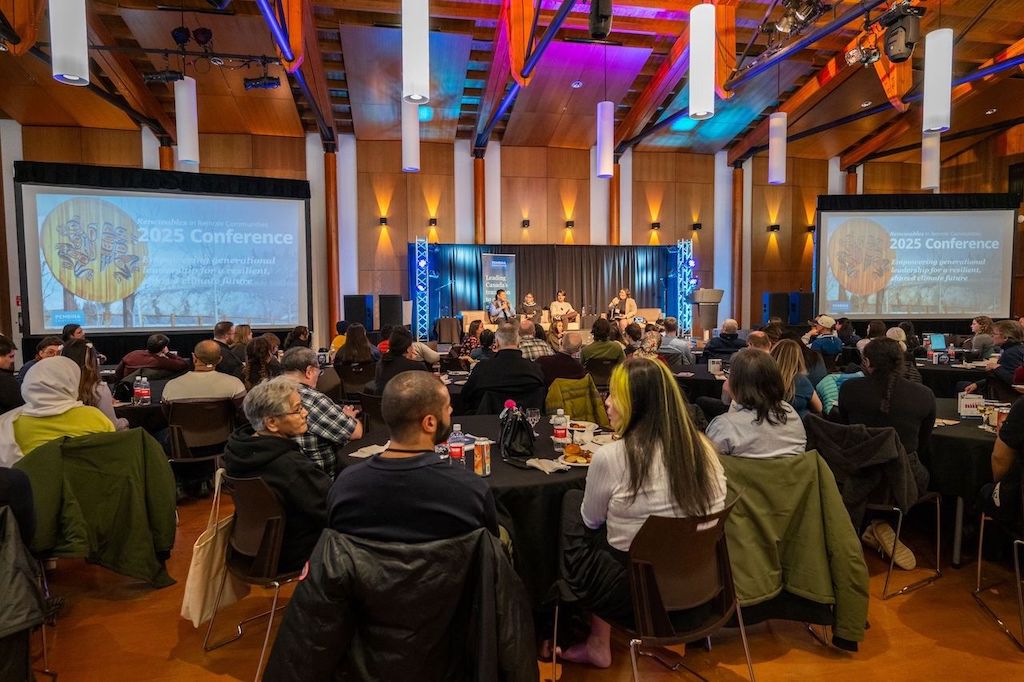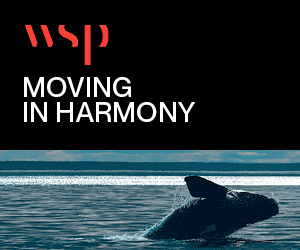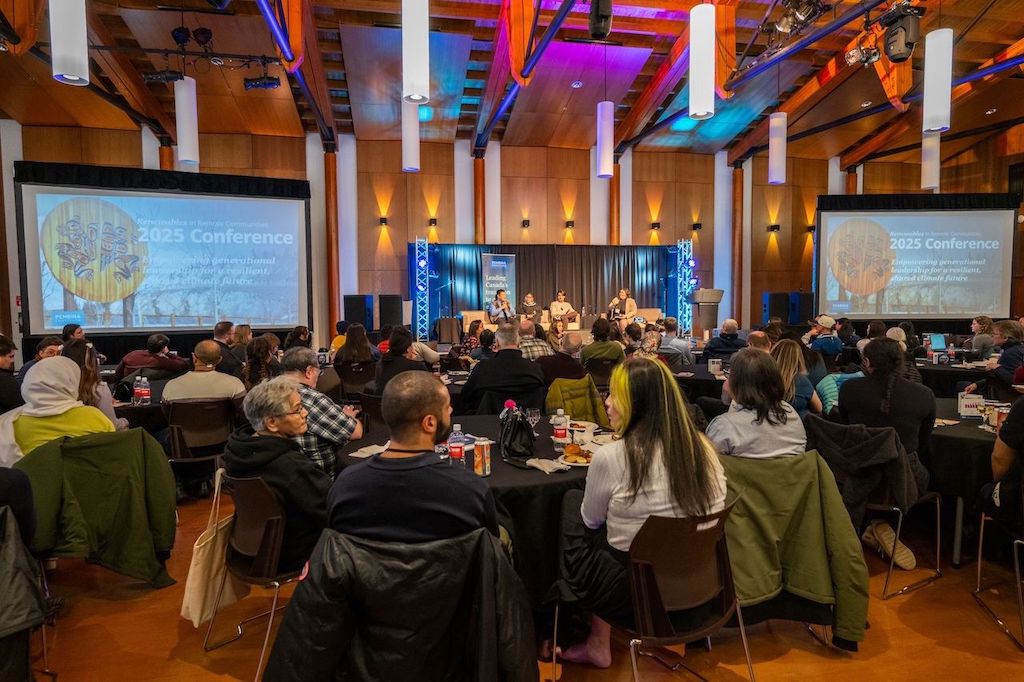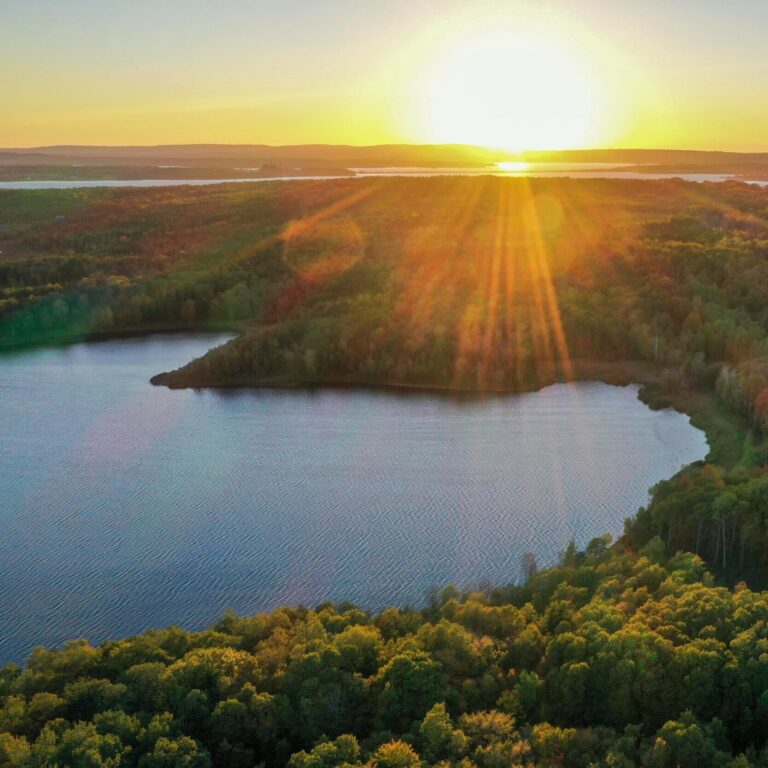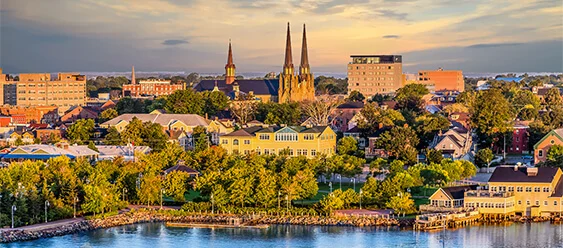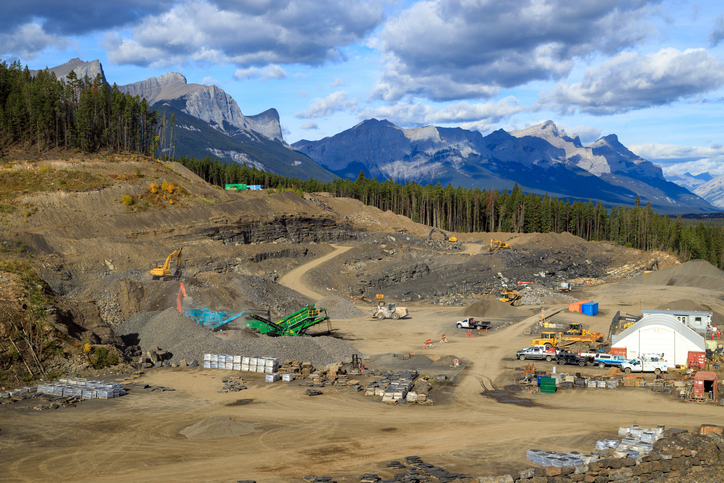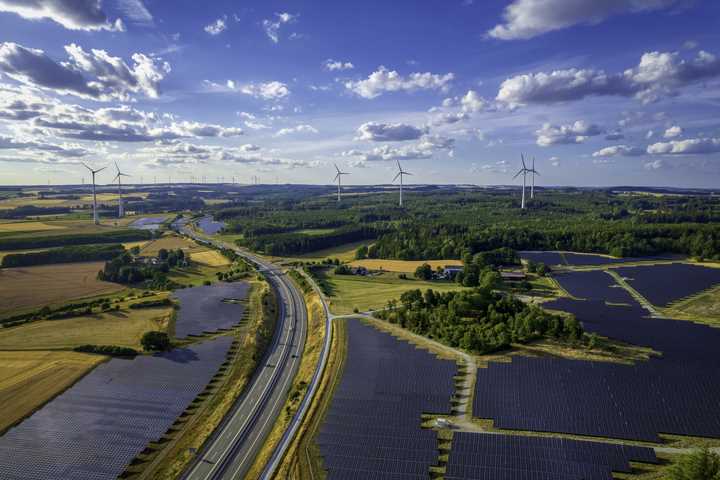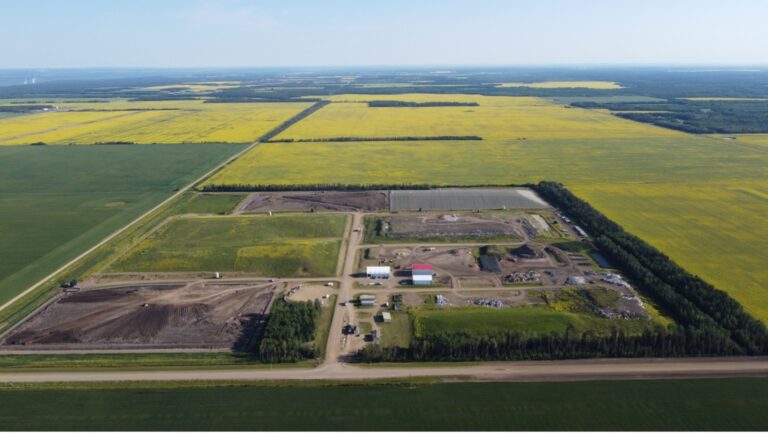Saturday, August 30, 2025
From March 25 to 28, 2025, the Pembina Institute hosted its bi-annual Renewables in Remote Communities (RiRC2025) conference at the Kwanlin Dün Cultural Centre, nestled in the heart of Whitehorse, Yukon, on the shared traditional territory of the Kwanlin Dün First Nation and Ta’an Kwäch’än Council. Over 350 attendees—from Indigenous leaders to government representatives, utilities, industry professionals, youth, and more—gathered to exchange knowledge, build networks, and discuss innovative solutions for renewable energy in remote communities across Canada.
The Power of an Indigenous-Led Just Transition
At its core, RiRC2025 was a rallying point for accelerating Indigenous-led solutions for a just transition. The event centred around the importance of a community-led, ground-up approach, recognizing that Indigenous leadership is pivotal in creating sustainable and resilient energy systems. The conference highlighted the crucial role of collaboration between governments, industry, and Indigenous communities to support a just energy transition.
A powerful thread throughout the conference was the emphasis on Indigenous sovereignty and the importance of community ownership over energy planning and resources.
Serena Mendizabal, Managing Director at Sacred Earth Solar (an Indigenous women-led organization supporting Indigenous communities) as well as the Co-Chair and Founding Member of the SevenGen Energy’s National Indigenous Youth Energy Council (an Indigenous youth-led organization supporting the acceleration of Indigenous youth in the clean energy sector) stated:
“A just transition comes from the ground up. We need to provide capacity building and training and listen to communities. Extractivism, capitalism, and colonialism created the climate crisis. Self-determination is the climate solution and the key to a just transition. We need to prioritize social justice issues without limiting our work to carbon reductionism.”
This call for community-led energy solutions emphasized that the transition to clean energy must not only address environmental goals but also promote Indigenous self-determination.
Conference attendees and speakers continued to explore the concept of a just transition—emphasizing that the benefits of renewable energy must be distributed equitably across communities. This was particularly evident in the discussions on the interconnectedness of social, environmental, and economic challenges and opportunities. As Grace Nakimarak, Energy Coordinator for the Paulatuk Energy Working Group, noted: “A just transition connects back to improved health outcomes, a stronger economy and more resilient communities. It’s all interconnected.”
Energy as a Tool for Social, Economic, and Environmental Solutions
A prominent theme that ran through the conference was the concept of multi-solving—the idea that renewable energy solutions can address not just energy needs but also broader social, economic, and environmental challenges. This was a key focus during the session “Planning Energy Presents and Futures: Lessons from Collaborative Projects with Peter Ballantyne Cree Nation, Saskatchewan,” which highlighted a capacity-building project partnership between the University of Saskatchewan, QUEST Canada, and the Peter Ballantyne Cree Nation (PBCN).
Partners explored energy planning and biomass energy, with a particular focus on the role of community ownership and youth leadership. Dr. Saurabh Biswas, a Research Fellow at the University of Saskatchewan, discussed the importance of taking a holistic approach to energy solutions, explaining: “Energy is just one thread from a bundled knot of yarn, representing the entire community and its barriers, challenges, and opportunities. You can’t just pull on the energy string and think the entire ball will untangle. Energy must be integrated with other community needs to create lasting impact.”
Dr. Biswas emphasized that energy can be the enabler for co-benefits, driving solutions in areas such as education, health and wellness, as well as cultural preservation and revitalization. He explained that renewable energy solutions, when approached in a collaborative and inclusive manner, can create opportunities that go far beyond providing clean energy, helping communities address a wide range of challenges simultaneously.
The session also underscored the importance of capacity building and the need for stronger collaborative partnerships. Speakers noted that mutually-beneficial partnerships are vital for ensuring that energy solutions are both community appropriate and sustainable in the long term.
Engaging the Next Generation of Energy Leaders
A standout feature of RiRC2025 was its robust emphasis on youth involvement. Recognizing that young people are the future leaders of both remote communities and the renewable energy sector, the conference provided a dynamic space for youth to engage with one another, share their own insights, and actively shape the conversation about the future of energy.
The conference featured an inspiring youth panel, where young leaders and professionals in the energy sector discussed their personal journeys, career pathways, and the challenges and opportunities they face. These emerging leaders spoke about the importance of infusing Indigenous knowledge and values into renewable energy initiatives, stressing that a just energy transition is only possible if youth—as well as their communities—are empowered to lead the way.
The Road Ahead
As RiRC2025 drew to a close, the call for action was clear: to build a sustainable and resilient future, energy transitions must be community-led, collaborative, and multi-dimensional. The conference successfully showcased the potential of renewable energy to not only meet the energy needs of remote communities but to address broader social, economic, and environmental challenges. By integrating renewable energy solutions with local priorities, communities can achieve multiple co-benefits, from economic resilience to improved public health, to greater energy sovereignty.
The path forward will require ongoing collaboration between governments, industry, academic institutions, non-profits, youth, and Indigenous communities. The lessons learned at RiRC2025 reinforce the importance of supporting Indigenous leadership, empowering youth, and fostering strong partnerships for a cleaner, more just energy future.

Melissa Schweyer is the senior lead for communications at QUEST Canada and a member of Environment Journal’s Advisory Board.
Featured image credits: QUEST Canada

